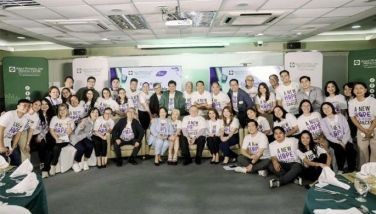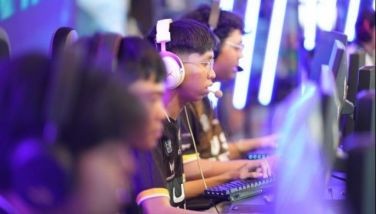Weavers and believers
MANILA, Philippines - In 2009, the second ASEAN Textile Symposium was held at the National Museum in Manila. All ASEAN countries — Indonesia, Thailand, Vietnam, Laos, Cambodia, Myanmar, Timor-Leste, Malaysia — participated in the event, which was hosted by the Museum Foundation of the Philippines. The Philippines, ironically, did not have its own textile society then.
This inspired Museum Foundation members Maribel Ongpin and Mita Rufino to create Habi: The Philippine Textile Council. They invited interested parties, particularly those who were into the preservation and developement of Philippine textiles, to join the council. Lourdes Montinola, who had published a book on piña in the early 1990s, immediately participated. Ongpin was voted to head the council as chairman and Ruby Diaz Roa was voted president. Habi, which means “woven†or “weave†in Filipino, was also inspired by Patis Tesoro and former First Lady Ming Ramos, who together pioneered the research on Philippine weaving traditions. Norma Respicio, a noted academic in indigenous fabrics, was another source of inspiration for the council. “Habi has since embarked on knowing and visiting weaving communities throughout the country, from northern Luzon in the Cordilleras to the far south like Lake Sebu in Mindanao,†says Diaz Roa.
Habi aims to preserve, develop and help market Philippine indigenous textile by assisting in the entire weaving process, including marketing the products and assisting the weavers — many of whom are women — in securing credit. “In being part of an economic activity,†says the Habi press release, women “empower themselves by earning an income.†Habi also encourages weavers to continue using natural materials that are not readily available to them, such as 100 percent cotton threads. “On occasion, Habi donates these cotton threads to the weavers for them to work and experiment with. This encourages them to continue weaving and hopefully encourage the youth to learn the art of weaving,†says Diaz Roa. Habi tries “to purchase as many finished products from the weavers and to bring the products to Manila and sell them to buyers.â€
From today until the 27th, the Third Likhang Habi Bazaar takes place at the Glorietta Activity Center. The bazaar — in addition to membership fees and donations from Habi members — is a source of funding for the council.
The bazaar is selling items made from our country’s indigenous materials, including inabel and other Cordillera weaves from Abra, Ifugao, Banguet, and Kalinga, piña, and tinalak. Some participants are Monchet y Compania by Monchet Olives, Balay in Atong by Al Valencia, Filip + Inna by Len Cabili, Olivia d’Aboville for Rurungan sa Tubod, Lulu Tan-Gan, Durado, and fashion and accesories label Lila. From clothes, fans, bags, and accessories to household wares and decor, the bazaar offers a range of goods which, over the years and through its previous bazaars, have increased in quality. Communities of weavers are also on-hand to present their goods. The guest participant of the bazaar from the ASEAN textile community is Indonesia.
* * *
The annual Likhaang Habi Bazaar starts today until the 27th at the Glorietta Activity Center, from 10 a.m to 10 p.m.
















